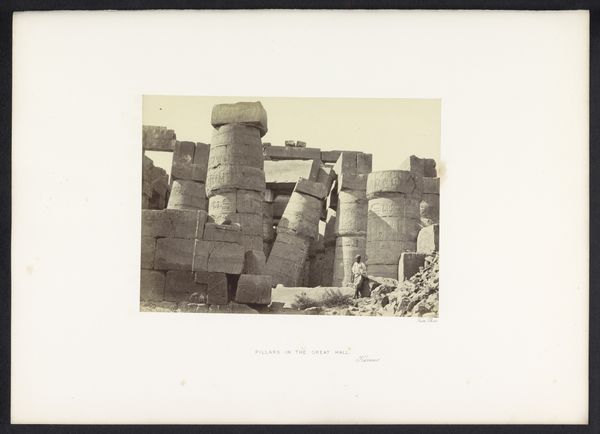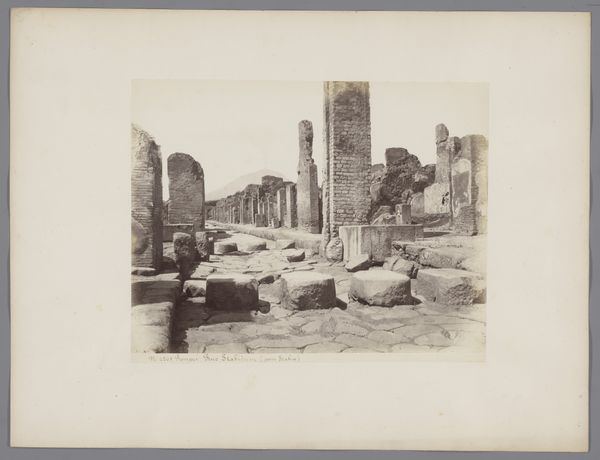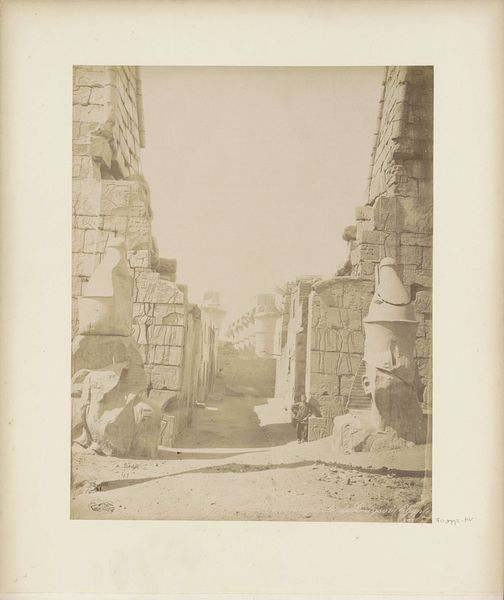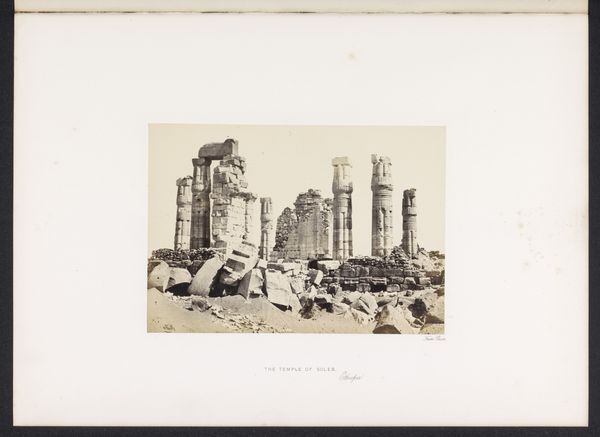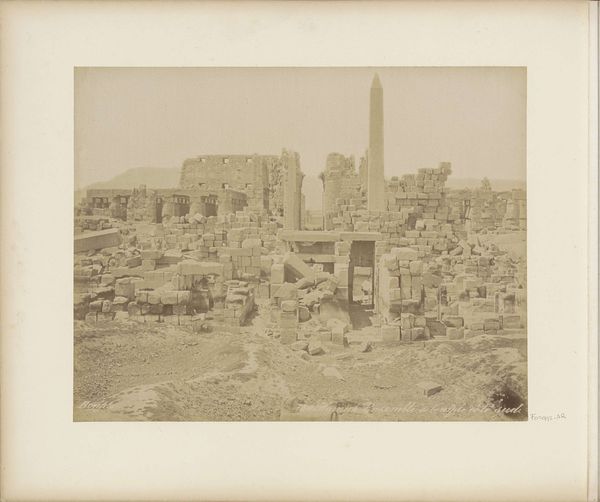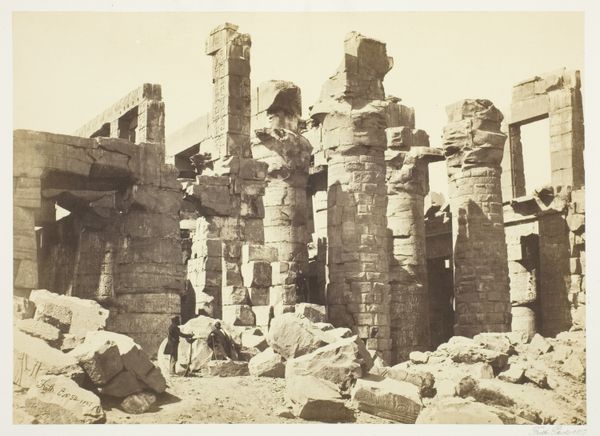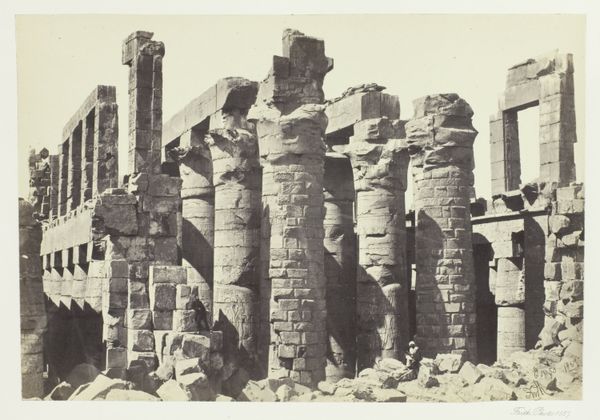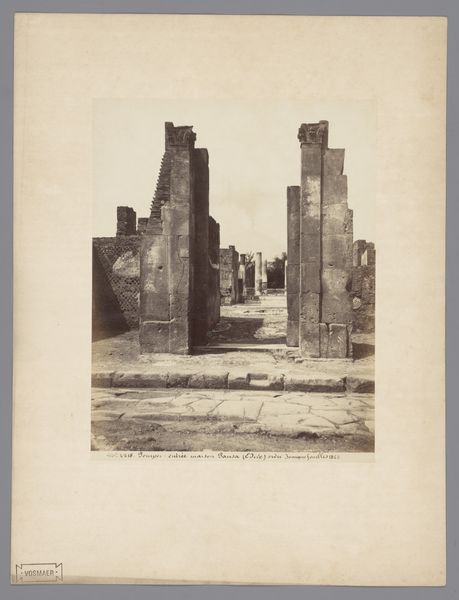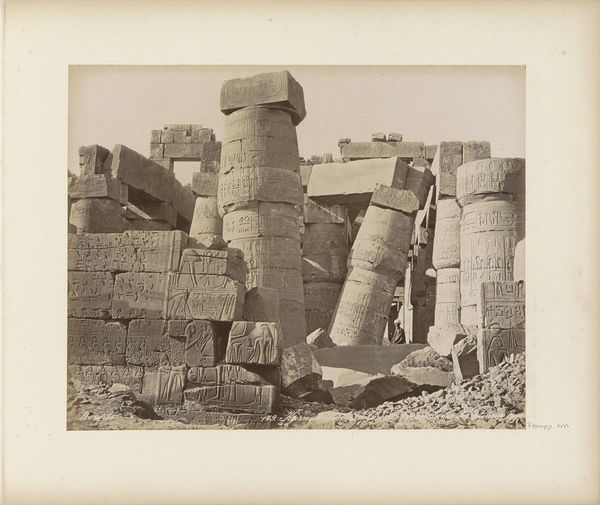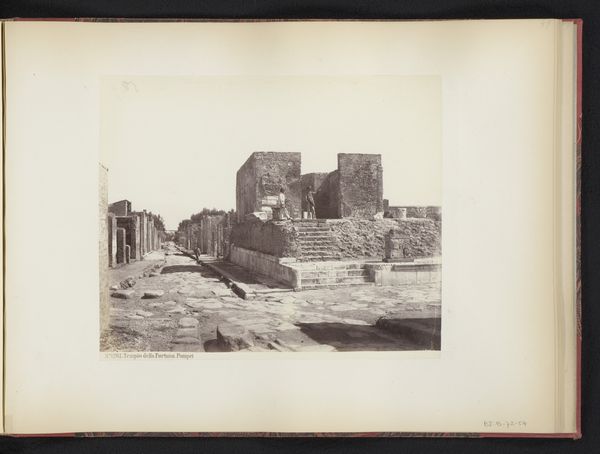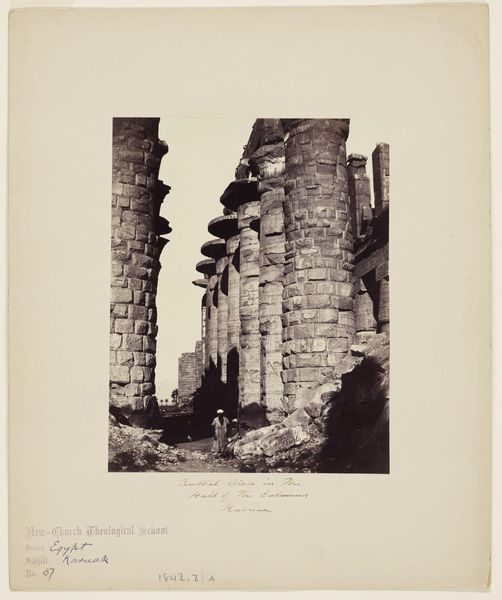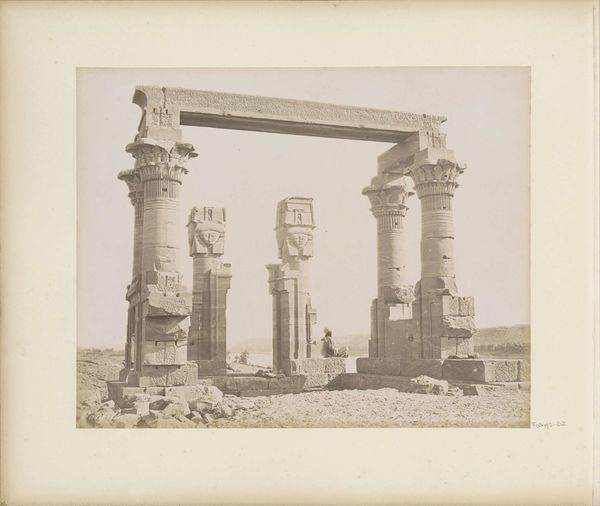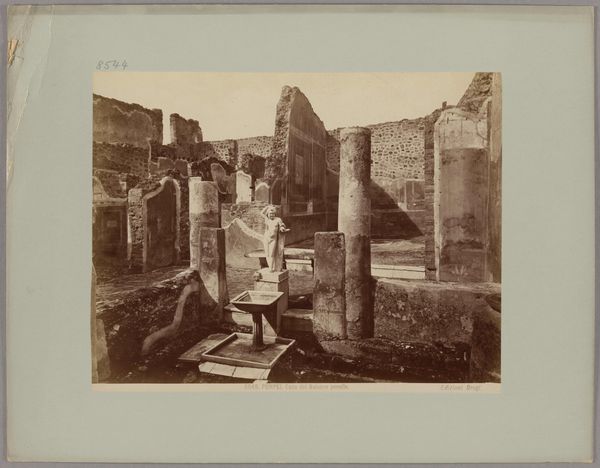
Grote Tempel met de obelisken van Thoetmosis I en zijn dochter Hatsjepsoet in Karnak c. 1870 - 1890
0:00
0:00
photography, gelatin-silver-print
#
landscape
#
ancient-egyptian-art
#
photography
#
ancient-mediterranean
#
gelatin-silver-print
#
history-painting
Dimensions: height 216 mm, width 273 mm
Copyright: Rijks Museum: Open Domain
This photograph captures the Great Temple at Karnak, featuring obelisks erected by Thutmose I and Hatshepsut. These towering stone structures, etched with hieroglyphs, were not merely monuments but potent symbols of royal power and solar worship. Consider the obelisk – a form echoed across millennia in various cultures as a symbol of stability, authority, and spiritual ascent. From the Egyptian sun cult to the Washington Monument, these monoliths have appeared in different contexts, each time carrying echoes of their ancient past. In ancient Egypt, the obelisk was associated with the sun god Ra. The hieroglyphs adorning the obelisks are not just decorative; they invoke the divine, binding the ruler to the cosmos. This act of memorializing through symbolic representation transcends mere commemoration, tapping into a primal desire to defy mortality. Notice how the verticality of the obelisk draws the eye upward, stirring a sense of awe and connecting the earthly realm to the celestial. The enduring presence of these symbols reflects humanity’s ongoing dialogue with power, divinity, and legacy, their meanings continuously reshaped by the currents of history.
Comments
No comments
Be the first to comment and join the conversation on the ultimate creative platform.
